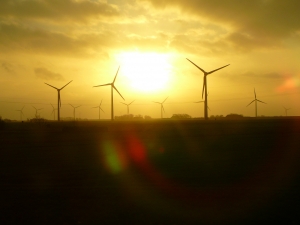
Along with more than 1.7 GW of wind power, 34 MW of energy storage is expected to come online in Ontario by September 2016.
Editor’s Note: Ontario’s Independent Electricity System Operator (IESO) in Canada is projecting that more than 1.7 gigawatts (GW) of wind power will be grid-connected by September 2016. The report, which covers April 2015 to September 2016, forecasts about 2.3 GW of new supply will be incorporated into Ontario’s existing generation fleet. Furthermore, the first energy storage project, which will help manage the grid, including the variability of wind and solar generation, is expected to come into service before the end of this outlook period. The entire 18-month outlook can be found here.
Ontario’s electricity system is well resourced to meet electricity demand through the summer and over the next year and a half, the Independent Electricity System Operator (IESO) reports in its latest 18-Month Outlook. This report, which covers the period from April 2015 to September 2016, forecasts that there is sufficient capacity to meet demand, which could reach as high as 24,800 megawatts (MW) this summer.
Over the outlook period, about 2,300 MW of new supply will be incorporated into the province’s existing generation fleet, which includes about 1,700 MW of wind energy, 10 MW of hydroelectric, 300 MW of gas, 240 MW of solar power, and 40 MW of biofuel resources. Additionally, the first storage project from the 2014 procurement of 34 MW of energy storage projects, which will help manage grid needs, as well as the variability of wind and solar generation, is expected to come into service before the end of this outlook period.
In addition to the planned projects, the Thunder Bay Generation Station G3 unit recently came back into service, fueled with advanced biomass, and will contribute 153 MW to provide continued reliability in northern Ontario.
“Ontario is in a solid position with adequate generation and transmission capability to meet consumers’ needs over the next 18 months,” say Kim Warren, IESO’s Vice-President of Market and System Operations. “The combination of conservation, time-of-use and renewable energy now play a significant role in reducing peak demand, which is quite a change from where we were five or six years ago.”
With the addition of significant wind supplies, conditions for surplus baseload generation are likely to continue over the outlook period. However, it’s expected that the surplus will be managed effectively using normal market mechanisms.
The IESO regularly assesses the adequacy and reliability of Ontario’s power system. The 18-Month Outlook is issued on a quarterly basis, in conjunction with the Ontario Energy Report, which highlights key trends in the energy sector.
IESO
www.ieso.ca
Filed Under: News, Projects




